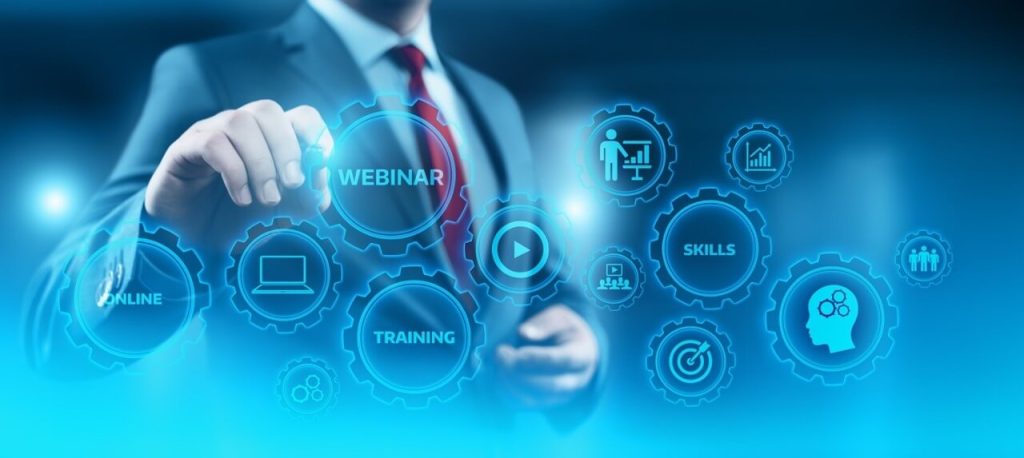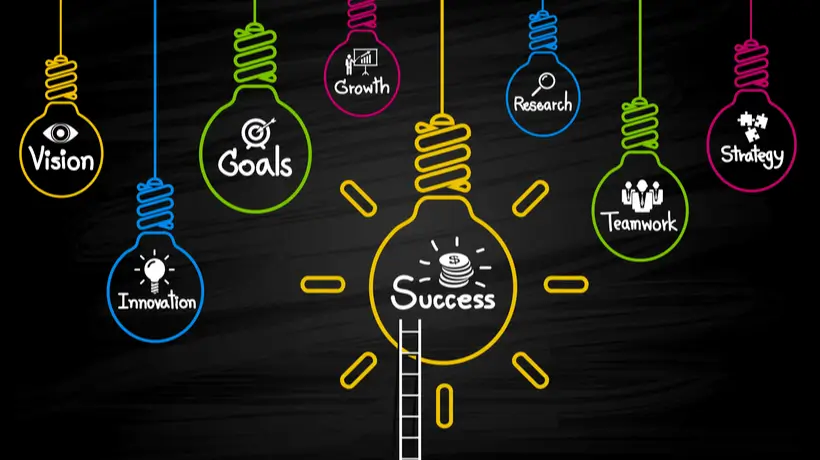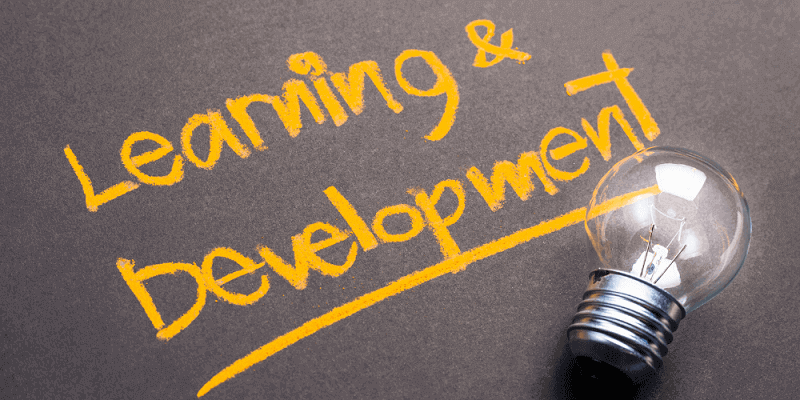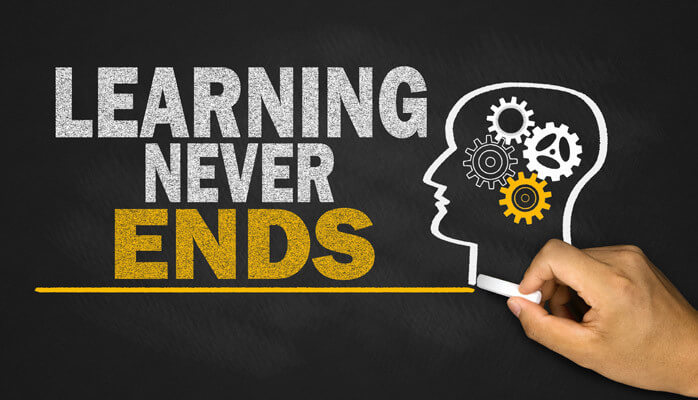
Never Stop Growing: Why Learning and Development Matter More Than Ever
Ever Feel Stuck in a Learning and development Rut? Welcome to the Club
Let’s face it, learning new things can feel overwhelming sometimes. Maybe you’re stuck in a job you want to escape, or you just have a nagging feeling you could be doing more. Well, guess what? You’re not alone
This is your invitation to the Lifelong Learning Lounge, a space for curious minds who want to dust off the cobwebs and start learning again. Whether you’re a seasoned pro or just starting your career climb, there’s always something new to discover.
Here, we’ll ditch the stuffy textbooks and dive into the world of L&D (Learning and Development) in a fun and relatable way. We’ll explore the coolest learning hacks, hottest in-demand skills, and resources galore to fuel your personal and professional growth.
Think of it as your personal learning oasis! Grab your favorite drink, settle in, and get ready for an adventure. We’ll cover everything from:
Learning like a boss: We’ll share tips to help you remember things that don’t involve all-nighters fueled by coffee.
Skill up your life! We’ll explore the skills that are making waves in the job market, so you can stay ahead of the curve.
Your learning roadmap: Craft your own personalized learning plan to reach your goals, because hey, one size definitely doesn’t fit all!
Resources for the win: We’ll show you where to find all the amazing tools and websites to supercharge your learning journey.
Table of Content
What is the difference between learning and development?
Learning and development are two sides of the same coin, but they serve distinct purposes. Here’s how they differ:
The goal of learning is to acquire new abilities and knowledge. It’s the foundation for development. Imagine it like collecting puzzle pieces. You might learn through various methods like reading, attending workshops, or taking online courses.
Development is about putting those acquired pieces together and using them to grow. It’s about applying knowledge and skills to improve performance, solve problems, and reach your full potential. Think of it as building the picture from those puzzle pieces. Development can involve mentorship, taking on challenging assignments, or participating in development programs.
Here’s a Case Study:
- Learning is like attending driving school – you learn the rules and how to operate a vehicle.
- Development is about gaining experience behind the wheel and becoming a confident, safe driver.
- In conclusion, learning equips you with the tools, and development helps you use them effectively. Ideally, both go hand in hand for continuous growth and improvement.

What is the difference between learning and training?
Learning and training are closely related but have some key differences:
Learning is the broader concept. It refers to the entire process of acquiring knowledge, skills, and abilities. This can happen through various methods, both formal and informal. You can learn from reading books, attending classes, watching videos, having conversations, or simply by life experiences. Learning is often self-directed and driven by curiosity or a desire to improve.
However, training is a more systematic method of learning. It’s typically designed to equip someone with specific skills or knowledge needed for a particular task or role. Training programs usually have clear objectives, a defined curriculum, and an instructor or facilitator. Companies often provide training to their employees to improve job performance or teach them how to use new software.
Here’s a table summarizing the key differences:
| Feature | Learning | Training |
| Scope | Broad | Specific |
| Duration | Ongoing | Defined start and end |
| Focus | Personal growth | Job performance |
| Methods | Varied, self-directed | Structured, instructor-led |
| Examples | Reading a book, attending a conference | Learning a new software, safety training |
In essence, training is a subset of learning. Training provides the tools and knowledge, while learning is the overall process of absorbing that information and developing the ability to use it effectively.
♦ What is a CLDP Certification?
The CLDP stands for Certified Learning and Development Professional. It’s a certification program designed for people who work in the field of Learning and Development (L&D). Earning a CLDP certificate shows that you have the knowledge and skills to design, develop, and deliver effective training programs.
♦ What will you benefit from a Certified Learning and Development Professional | CLDP?
A Certified Learning and Development Professional | CLDP can help you achieve the following advantages:
- Career Advancement: The CLDP is a globally recognized certification that demonstrates your expertise in L&D. This can give you a competitive advantage in the job market and help you qualify for higher-paying positions.
- Enhanced Credibility: Earning the CLDP shows employers and colleagues that you are a serious professional who is committed to your field. This can boost your reputation and credibility within the L&D community.
- Improved Skills and Knowledge: The CLDP program covers a wide range of topics related to learning and development, including designing training programs, evaluating learning outcomes, and using adult learning principles. Completing the program will help you develop the skills and knowledge you need to be a more effective L&D professional.
- Increased Value to Your Organization: With your CLDP certification, you’ll be better equipped to create and deliver training programs that meet the needs of your organization and its employees. This can lead to improved employee performance, increased productivity, and a stronger overall learning culture.
- Commitment to Professional Development: Pursuing the CLDP demonstrates your dedication to continuous learning and professional growth. This is a valuable quality for any employer.
Overall, the CLDP certification can be a valuable asset for anyone who works in the field of Learning and Development. It can help you advance your career, improve your skills, and increase your value to your organization.
♦ What is a CLDM Certification?
The CLDM certification stands for Certified Learning & Development Manager. It’s a professional qualification aimed at individuals working in Human Resources (HR) or training, specifically those seeking to enhance their abilities in managing and overseeing organizational learning and development initiatives.
♦ What will you benefit from a Certified Learning and Development Manager | CLDM?
Here’s a breakdown of the benefits of obtaining a Certified Learning and Development Manager | CLDM certification:
- Expertise in L&D Management: The CLDM equips you with the necessary skills to effectively design, manage, and assess learning programs within an organization. This makes you a specialist in overseeing the entire L&D process.
- Strategic Focus: The program emphasizes strategic thinking, allowing you to create and execute learning strategies that align with the organization’s goals.
- Evaluation and Measurement: A CLDM holder gains expertise in evaluating the impact of L&D initiatives, enabling them to measure the effectiveness of training programs and their contribution to business objectives.
- Career Advancement: The CLDM certification demonstrates your advanced capabilities in L&D management, making you a strong candidate for leadership positions within the field.
- Increased Value: Earning this credential showcases your commitment to excellence in L&D, setting you apart in the job market and positioning you as a catalyst for organizational growth through talent development.
In essence, the CLDM Certification empowers HR professionals to become leaders who can strategically manage and optimize the learning and development experience within their organizations.

What is performance management?
Performance management is the systematic process through which organizational leaders, managers, or supervisors monitor and evaluate the performance of the employees under their supervision. Unlike traditional employee appraisal systems, it offers a more comprehensive approach to assessing employee performance. A successful performance management strategy is often continuous, providing managers with multiple opportunities to offer feedback, corrections, and rewards to their team members.
Moreover, performance management provides employees with numerous opportunities to enhance their work performance. By empowering teams to continually improve, it enables them to contribute effectively to both long- and short-term company goals and objectives. Typically, performance management courses utilize various tools to measure goals, objectives, and milestones, ensuring that employees remain productive and aligned with organizational objectives.
What is the difference between HR and Learning and Development [L&D]?
HR and Learning and Development [L&D], though both important for a company’s workforce, focus on different aspects of employee life. Here’s a breakdown:
HR (Human Resources):
- Focus: The overall employee life cycle, from recruitment and onboarding to compensation, benefits, and performance management.
- Responsibilities: Tasks like hiring new staff, managing employee relations, ensuring legal compliance, handling payroll and benefits, and overseeing disciplinary procedures.
L&D (Learning and Development):
- Focus: Employee growth and skill development.
- Responsibilities: Identifying skill gaps, designing and delivering training programs, implementing coaching and mentoring initiatives, and evaluating the effectiveness of learning programs.
Think of it this way:
- HR is like the gardener, ensuring the right plants (employees) are in the garden (company) and have the resources they need to survive. L&D is like the horticulturist, helping those plants grow and reach their full potential.
Overlapping Responsibilities:
- While their core functions are distinct, HR and L&D often collaborate. For instance, HR might identify a need for training during the onboarding process, and L&D would then design and deliver that training.

What is the role of Learning and Development | L&D?
The role of Learning and Development | L&D is all about empowering employees and the organization as a whole through knowledge and skill development. Here’s a closer look at its key functions:
- Identifying Skill Needs: L&D professionals analyze the current and future needs of the organization to identify skill gaps within the workforce. This might involve working with different departments, staying updated on industry trends, and keeping an eye out for new technologies.
- Designing Learning Programs: Once skill gaps are identified, L&D specialists design and develop training programs to address them. These programs can take various formats, from instructor-led classroom sessions to online courses, workshops, or even mentorship initiatives.
- Delivering Learning: L&D handles the delivery of these programs, ensuring they are engaging, effective, and accessible to all employees. This may involve working with internal or external trainers, utilizing eLearning platforms, or creating learning materials.
- Encouraging a Learning Culture: L&D fosters a culture of continuous learning within the organization. This goes beyond just delivering training programs and involves creating a supportive environment where employees feel encouraged to develop their skills and knowledge.
- Evaluating Learning Impact: L&D professionals assess the effectiveness of the training programs they implement. This ensures the programs are meeting their objectives and that employees are gaining the necessary skills.
In short, Learning and Development plays a crucial role in:
- Improving employee performance by equipping them with the skills they need to excel in their roles.
- Boosting innovation by helping employees develop new skills and ways of thinking.
- Preparing for the future by ensuring the workforce has the skills to adapt to changing business needs and technological advancements.
- Enhancing employee engagement by providing opportunities for growth and development.
By effectively developing the workforce, L&D contributes significantly to the overall success and competitiveness of an organization.
Why is learning and development important?
Learning and development (L&D) is crucial for both individual employees and organizations as a whole. Here’s a breakdown of its importance:
Benefits for Employees:
- Increased Skills and Knowledge: L&D programs equip employees with the skills and knowledge they need to perform their jobs effectively and efficiently. This can lead to higher job satisfaction, a greater sense of accomplishment, and increased career opportunities.
- Adaptability and Future-Proofing: The world of work is constantly changing. L&D helps employees stay up-to-date with industry trends, new technologies, and best practices. This adaptability allows them to thrive in a changing environment and be prepared for future challenges.
- Personal and Professional Growth: L&D fosters a culture of continuous learning, which benefits employees not just in their current roles but also in their personal development. Learning new things keeps the mind sharp, boosts confidence, and opens doors to new possibilities.
Benefits for Organizations:
- Improved Performance and Productivity: A skilled and knowledgeable workforce is a more productive workforce. L&D programs can lead to increased efficiency, better problem-solving skills, and improved decision-making within the organization.
- Enhanced Innovation: By encouraging employees to learn and develop new skills, L&D can foster a culture of innovation. Employees who feel empowered to experiment and try new things are more likely to come up with creative solutions and improve processes.
- Increased Employee Engagement and Retention: Investing in employee development shows that a company values its workforce. This can lead to higher employee engagement, satisfaction, and loyalty, which in turn reduces turnover and recruitment costs.
- Competitive Advantage: In today’s competitive business landscape, having a highly skilled and adaptable workforce is essential. L&D programs can give a company a significant edge over competitors by ensuring its employees have the skills and knowledge needed to succeed.
Overall, L&D is a win-win situation for both employees and organizations. By investing in learning and development, companies can create a more skilled, engaged, and future-proof workforce, leading to greater success and sustainability.

What are the examples of learning and development?
Learning and development (L&D) can take many forms, catering to different learning styles and addressing various skill gaps. Here are some examples:
Formal Training Programs:
- Instructor-led classroom sessions: Trainers deliver presentations, lead discussions, and provide hands-on practice on specific topics.
- Online courses: E-learning modules offer a flexible and convenient way for employees to learn at their own pace.
- Workshops: Interactive sessions focused on developing specific skills through practical exercises and case studies.
On-the-Job Learning:
- Mentorship programs: Experienced employees guide and support less experienced colleagues, sharing knowledge and best practices.
- Job shadowing: Employees observe senior colleagues performing their tasks to gain insights into different roles and responsibilities.
- Stretch assignments: Employees are given challenging tasks outside their comfort zone to learn new skills and develop their abilities.
Other Examples:
- Conferences and seminars: Attending industry events allow employees to network with peers, learn about new trends, and gain valuable insights.
- Brown bag lunches: Informal sessions where employees share their knowledge and expertise with colleagues on a specific topic.
- Online learning resources: Providing access to online resources like articles, tutorials, and webinars keeps employees up-to-date on industry trends.
- Learning management systems (LMS): Online platforms that centralize training materials, track employee progress, and facilitate online learning.
The most effective L&D programs often combine different approaches to cater to a variety of learning styles and needs. Remember, L&D isn’t a one-size-fits-all solution. The key is to create a comprehensive learning ecosystem that empowers employees to take charge of their development and continuously expand their skills.
Let’s delve into some examples of learning and development (L&D) programs that cater to various needs and preferences:
Formal Training Programs:
- Software Skills Training: If your company is transitioning to a new project management tool, an L&D program could involve instructor-led sessions or online courses teaching employees how to effectively use the software.
- Compliance Training: Many industries have mandatory compliance regulations. L&D might design e-learning modules or workshops to ensure employees understand these regulations and adhere to best practices.
On-the-Job Learning:
- Sales Coaching: Senior salespeople can mentor new hires, guiding them on effective sales techniques, product knowledge, and navigating customer interactions.
- Job Rotation: Assigning employees to different departments for short periods allows them to learn new skills, broaden their perspectives, and gain insights into the bigger picture of the organization’s operations.
Other Examples:
- Hackathons: These innovation-focused events challenge teams of employees to come up with creative solutions to real-world problems. This fosters teamwork, problem-solving skills, and out-of-the-box thinking.
- Leadership Development Programs: These programs equip managers with the skills they need to effectively lead and motivate their teams. This could involve workshops on communication, conflict resolution, and performance management.
- Language Learning Programs: For companies operating internationally or aiming to expand their global reach, L&D programs can provide language courses to help employees communicate effectively with colleagues and clients from different cultures.
- Microlearning: Short, bite-sized learning modules delivered through mobile apps or online platforms allow employees to learn new things in small chunks during their workday, fitting easily into busy schedules.
Remember, effective L&D goes beyond just providing training. It’s about creating a culture of learning where employees are encouraged to seek out new knowledge, share their expertise with others, and continuously develop their skills. This can be fostered through initiatives like knowledge-sharing sessions, online forums, and employee recognition programs that reward continuous learning.

Should Learning and Development | L&D be part of HR?
Imagine you’re trying to grow a fantastic garden. HR is like the gardener, making sure you have the right plants (employees) and the tools they need (benefits, salaries) to thrive. But even the best gardener needs a helping hand to make those plants flourish, that’s where L&D comes in!
L&D is like a gardening guru. They assess what your plants (employees) need to grow and prosper. Maybe it’s learning how to use a new watering can (software), or mastering a fancy pruning technique (communication skills). L&D can provide workshops, and online courses, or even team up with experienced gardeners (senior colleagues) to mentor the newbies.
There are two main ways companies handle these gardening gurus:
- Teamwork Makes the Dream Work: Some places keep HR and L&D together. This way, they’re on the same page about what your plants (employees) need throughout their lifecycle, from getting them settled in (onboarding) to helping them reach their full potential (career development).
- The Dedicated Gardener: Other companies have a separate L&D department. This allows them to focus solely on the latest gardening techniques (learning trends) to keep your plants super-prepared for whatever comes their way (future challenges).
Whichever way a company chooses, the most important thing is that HR and L&D work together. They should chat constantly about what your plants (employees) need and brainstorm the best ways to help them grow strong and beautiful (reach their full potential). By working as, a team, they can create a thriving garden (workforce) that benefits everyone!
What is the difference between Learning and Development | L&D and OD?
Learning and Development | L&D and OD (Organizational Development) both play a role in improving a company, but they focus on different aspects. Here’s a breakdown to understand the key distinctions:
Focus:
- L&D: Concentrates on developing individual employees by equipping them with the skills and knowledge they need to excel in their roles. It’s like providing a toolbox for each worker.
- OD: Looks at the bigger picture, focusing on developing the entire organization as a system. It aims to improve processes, communication, culture, and overall effectiveness. Think of it as optimizing the entire workshop where the employees work.
Here’s a Case Study:
Imagine you’re a car mechanic (L&D). Your job is to make sure each car (employee) is running smoothly. You’ll diagnose problems (skill gaps), recommend parts (training programs), and ensure the car is tuned up (has the necessary skills) to perform well.
An OD consultant, on the other hand, is like a racetrack manager. They’ll look at the entire racetrack (organization), analyzing things like pit crew efficiency (teamwork), track layout (communication channels), and even the quality of the fuel (company culture). Their goal is to optimize the entire system for peak performance.
Overlap and Collaboration
While L&D and OD have distinct focuses, they can work together effectively. L&D programs can be designed to support OD initiatives, and OD can help create a culture that encourages continuous learning championed by L&D.
For instance, if an OD initiative aims to improve teamwork across departments, L&D might design training programs on communication and collaboration skills.
So, which is more important?
Both L&D and OD are crucial for a company’s success. Strong individual skills (L&D) combined with a well-functioning system (OD) create a powerful engine for growth and achievement.

What does LMS mean in L&D?
In the world of L&D (Learning and Development), LMS stands for Learning Management System. It’s essentially a software application that acts as a central hub for all your organization’s learning activities.
Think of it as a giant online toolbox for learning and development. Here are some key things an LMS can do:
House Training Materials: Store all your training content, like e-learning modules, documents, videos, and presentations, in one easily accessible location.
Deliver Courses: LMS allows you to deliver training programs online, making them accessible to employees anytime, anywhere.
Track Learner Progress: Monitor employee progress through courses, tests, and assignments. This helps identify areas where employees might need additional support.
Manage Users: The LMS keeps track of who has access to different training materials and programs.
Here’s a real-world example:
Imagine you work for a large company with hundreds of employees across different locations. Your L&D team has developed a new compliance training program. An LMS would allow them to:
- Upload the training modules and quizzes to the LMS.
- Enroll all employees in the training program.
- Track employee progress and identify any employees who struggle with specific topics.
- Deliver reminders and notifications to ensure everyone completes the training on time.
Overall, an LMS is a powerful tool for L&D professionals. It streamlines the creation, delivery, and management of training programs, making it easier to provide employees with the learning opportunities they need to succeed.

What is L&D project management?
L&D project management is the application of project management principles to the specific tasks and goals of Learning and Development (L&D) initiatives. It’s essentially the roadmap that ensures your L&D projects, like training programs or workshops, are delivered on time, within budget, and achieve the desired learning outcomes.
Here’s a breakdown of what L&D project management typically involves:
- Planning and Needs Assessment: This initial phase involves defining the project goals, identifying the target audience, and assessing their learning needs. An L&D project manager would consider factors like skill gaps, desired learning outcomes, and budget constraints.
- Design and Development: Once the needs are identified, the project manager works with instructional designers, subject matter experts, and other stakeholders to develop the training content. This could involve creating e-learning modules, designing instructor-led sessions, or selecting appropriate vendors for external resources.
- Implementation and Delivery: This phase focuses on launching the training program. The L&D project manager oversees logistics like scheduling, enrolling participants, and ensuring instructors or facilitators are prepared.
- Evaluation and Feedback: An effective L&D project manager measures the success of the training program. This might involve collecting feedback from participants, assessing knowledge gain, or measuring the impact on job performance.
Benefits of L&D Project Management:
- Increased Efficiency: A structured approach ensures tasks are completed on time and resources are used effectively.
- Improved Quality: Following a project management process helps maintain high-quality standards for training content and delivery.
- Reduced Costs: Proper planning and budgeting help avoid unforeseen expenses and wasted resources.
- Enhanced Stakeholder Satisfaction: Clear communication and project management keep stakeholders informed and involved throughout the process.
L&D project management is a valuable skill for anyone involved in developing and delivering training programs. It ensures a smooth and successful learning experience for employees, contributing to a more skilled and knowledgeable workforce.
At the end, choosing HPA is a perfect choice for individuals and corporate looking to develop and enhance their performance through different training courses, as HPA has extensive experience, high professionalism, and advanced technologies in this field.
To know more details about CLDP Certification, CLDM Certification and HR Courses Accredit and supported by HRCI | Human Resource Certification Institute®
; Contact us now.




